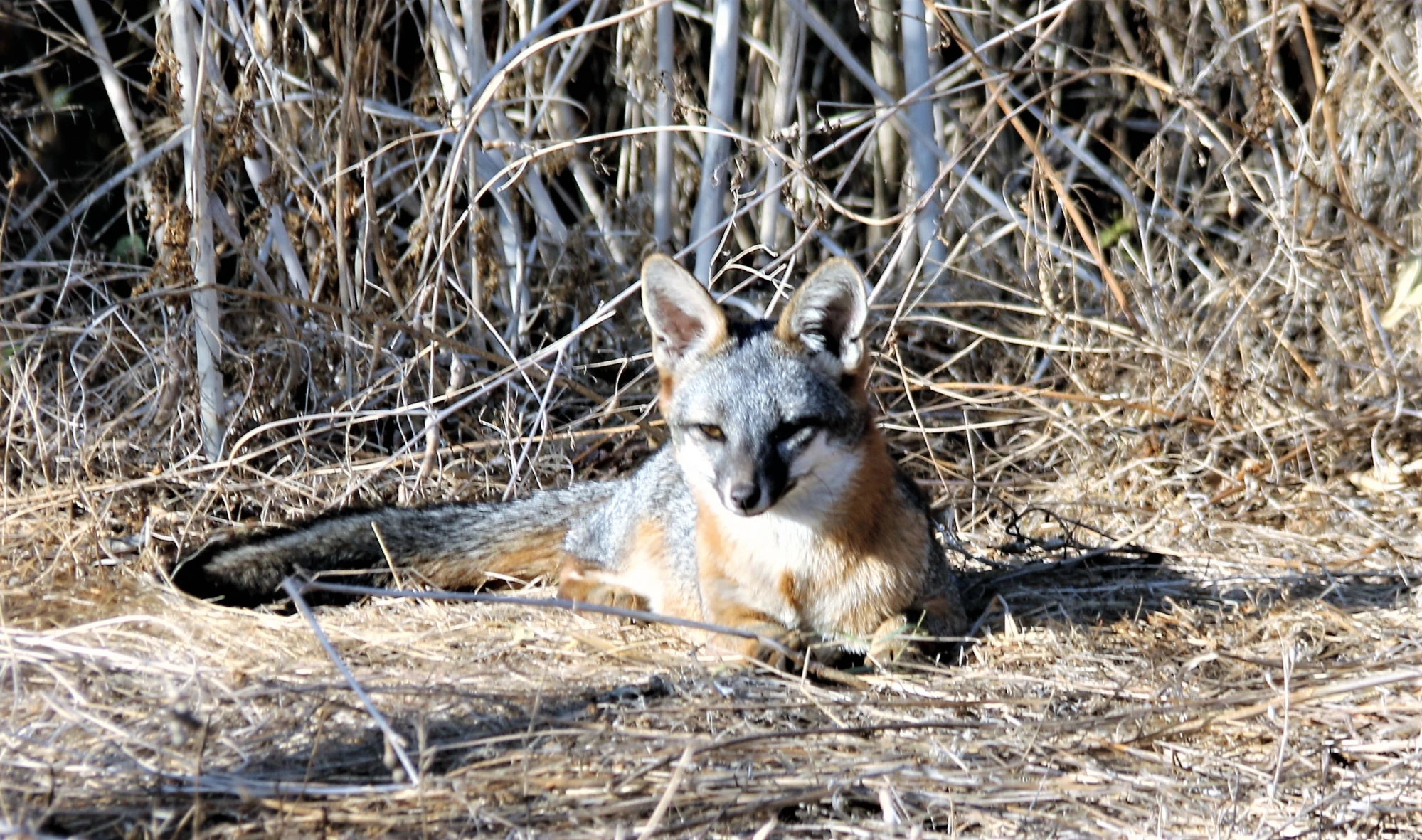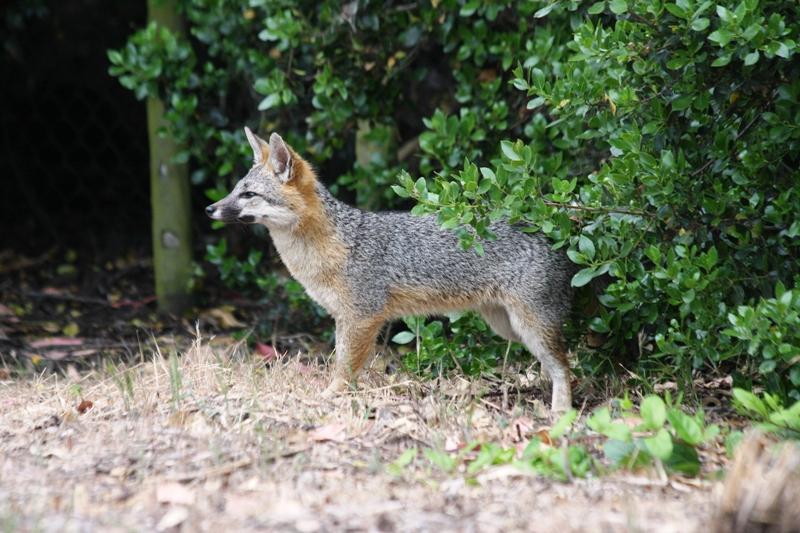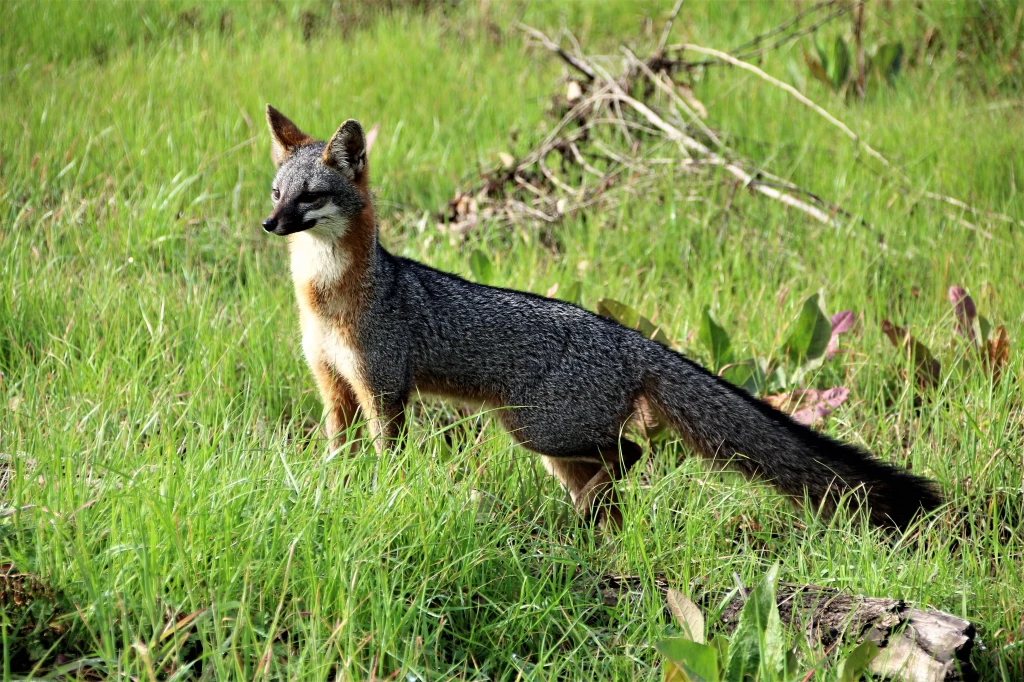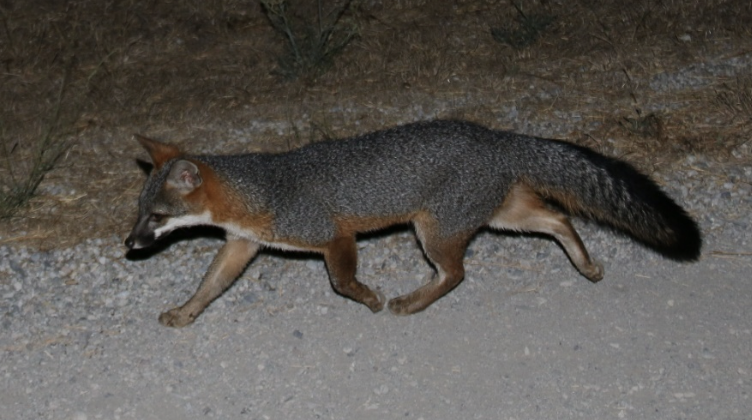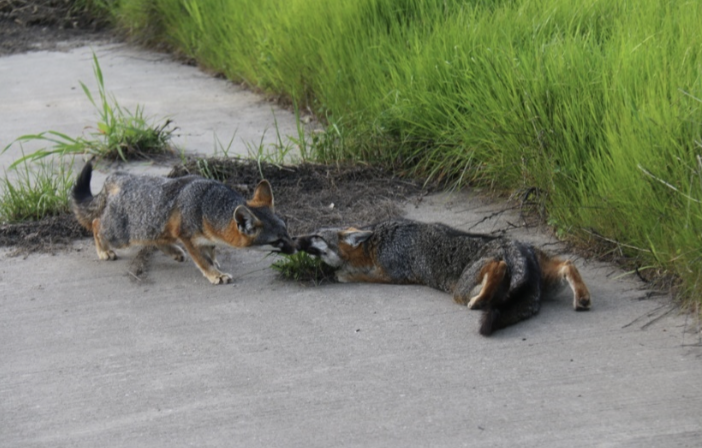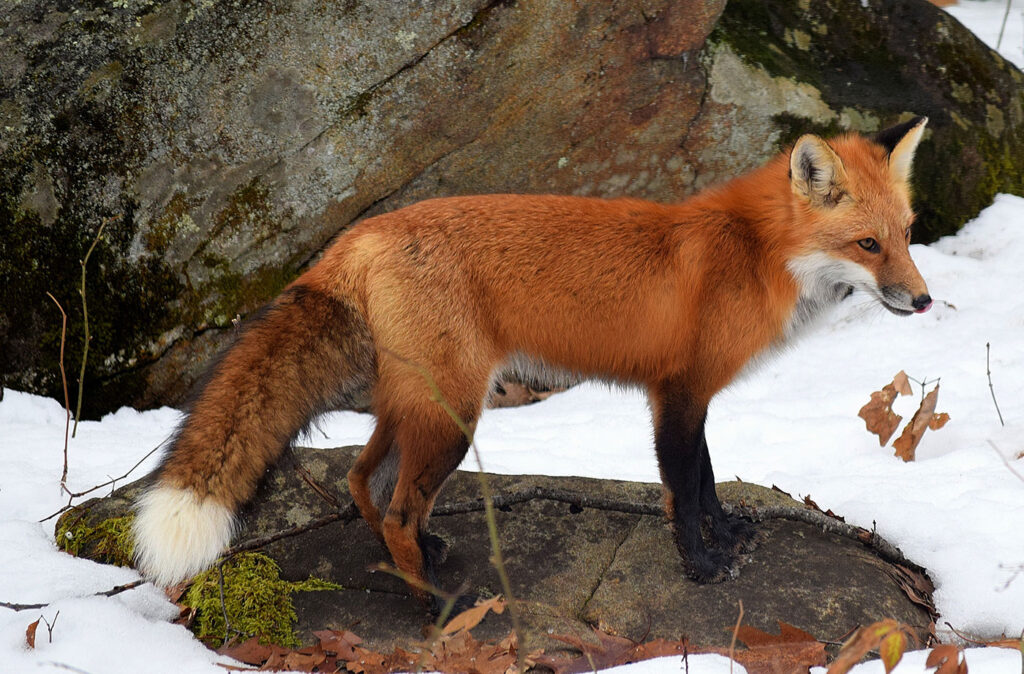Year End report:
Flooding,
Sniffing the Ground and
Why Not Use Wi-fi Trail Cameras?
by William C. Leikam
President, CEO & Co-founder, Urban Wildlife Research Project
Section I
This year, in contrast to many years past, we have had three floods along Matadero Creek. From Wikipedia, “Matadero Creek … flows in a northeasterly direction for 8 miles until it enters the Palo Alto Flood Basin….” It was also the creek where the padres of the 19th century slaughtered their cattle. In the 1980s many of the creeks draining the Santa Cruz Mountains have concrete channels that run from El Camino Real to Highway 101. It’s a short creek but during heavy rainstorms it drains much of Los Alto Hills and street run-off in south Palo Alto. When it crosses under Highway 101, the concrete channel ends and that begins the lower wild segment of the creek where gray foxes, raccoons, skunks, opossums, beavers, pack rats and other small critters that occupy the region live. When it floods, the waters rise between two levees, leaving very little room for the wildlife to escape into. With conditions like that, I often wonder how the wildlife cope with such a sudden influx of high water, especially the babies and those like skunks that cannot climb the nearest tree to avoid the water. For those who make it through, it sometimes takes a week for everything to return to normal and for the critters to return to their routines.
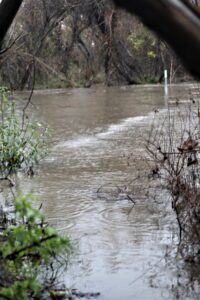 One of those routines, at least for the foxes, raccoons and the opossums, is that often when they are moving from point A to point B, they do so with their nose to the ground. Your pet dog does the same when you take him for a walk. Why? For the gray fox it means that if a meal, say a cottontail rabbit, had been out along the trail earlier, the incredible sensitivity of a fox’s nose is such that the fox can track the cottontail, and if necessary, wait in ambush for the unsuspecting rabbit to hop back out. Your dog is checking out other dogs that have been that way and they can even tell if they know that other dog just by its smell.
One of those routines, at least for the foxes, raccoons and the opossums, is that often when they are moving from point A to point B, they do so with their nose to the ground. Your pet dog does the same when you take him for a walk. Why? For the gray fox it means that if a meal, say a cottontail rabbit, had been out along the trail earlier, the incredible sensitivity of a fox’s nose is such that the fox can track the cottontail, and if necessary, wait in ambush for the unsuspecting rabbit to hop back out. Your dog is checking out other dogs that have been that way and they can even tell if they know that other dog just by its smell.
 Once people know that I am in the field twice daily, I get asked, “Why don’t you use those new wi-fi trail cameras? That way you wouldn’t have to come out so often especially in the rain and cold. You could do all the work from your office.” I reply, “With only an image on a screen, I can only know a tiny bit about the fox. I can’t see what happened after the fox leaves the camera’s reach. More importantly, I can’t keep track of their health unless I find their scat.
Once people know that I am in the field twice daily, I get asked, “Why don’t you use those new wi-fi trail cameras? That way you wouldn’t have to come out so often especially in the rain and cold. You could do all the work from your office.” I reply, “With only an image on a screen, I can only know a tiny bit about the fox. I can’t see what happened after the fox leaves the camera’s reach. More importantly, I can’t keep track of their health unless I find their scat.
By examining scat, I can tell what they have been eating and if there’s grass mixed in then the fox took care of a stomach problem. If the scat has tiny white seeds in it, that means that, that fox has a case of worms.” In doing a study like this, I’m getting the whole picture of the animal, not just a file that is incredibly limiting.
Section II
Update for the Urban Wildlife Research Project
We’ve made a new discovery and documented the first beavers to occupy Matadero Creek in 160 years. Palo Alto Weekly https://www.paloaltoonline.com/print/story/2022/11/04/the-beaver-is-back and the San Jose Mercury News https://www.mercurynews.com/2022/11/27/the-re-beavering-of-the-bay-area/
A new video documentary titled The Foxes, My Professors, about my work with the foxes and produced at Stanford University can be watched here.
Bill’s new book The Road to Fox Hollow has been released and can be found at Barnes & Noble Booksellers and directly from the publisher Di Angelo Publications. This is your best deal.
Dr. Marc Bekoff has an interview with Bill and that can be accessed at The Social and Emotional Lives of Urban Gray Foxes .
Bay Nature Magazine – “How to be a Fox” The article about Bill and his ethological approach to his study of the gray fox is online. Many are calling this a major article in the wildlife press.
BE SURE TO check out our YouTube Channel for some incredible wildlife videos and our Facebook page.
See Discipline Raccoon Style here.
Undoubtedly the best Radio interview ever – KALW (PBS program Crosscurrents) – by Sofie Kodner during December 2020 – Broadcast 1/11/2021 5:00 PM. Check it out here.
You can access Bill’s PowerPoint presentation Corridors & Connections: Sustaining the Health of All Wildlife presented during the October 24th P-22 Urban Wildlife Festival here: https://www.youtube.com/watch?v=Dh4MQL1D1Cc
NEW – To find out more about us, search Urban Wildlife Research Project, UWRP, gray foxes, wildlife connection, linkages, corridors, and several documentaries including the video clips.
Gray Foxes General Health
These two foxes appear to be in good health.
Total Numbers of Gray Foxes in the Palo Alto Baylands Nature Preserve: As of this date, we have two adult gray foxes living in the Palo Alto Baylands Nature Preserve.
Section III
Gray Fox, Baylands Goals
Within the permit that allows the Urban Wildlife Research Project to conduct its study of the behavior of the gray fox at the Palo Alto Baylands Nature Preserve, the objectives covered area:
- Monitoring of urban gray fox Denning sites in Palo Alto Baylands.
This is being accomplished during the period when the gray foxes use a den site. It is one of the prime locations for gathering most of the behavioral data of the litter and for adults alike.
- Assessment of status and population trends of Baylands urban gray foxes
Since January 2019 a pair of resident gray foxes have claimed territory at the Palo Alto Baylands Nature Preserve.
- Identification of habitat features that promote the presence of urban gray foxes
After considering this and talking with people who know how to restore habitats, we need to assess what kinds of plants, including the Alkaline Salt Bush, would grow best along the edge of the saltwater channel and alongside the marsh. We need to grow a permanent habitat that contains the corridors and plant it as soon as possible. We’ll keep an eye on this as this is a critical link between the southern region of the Baylands and the northern region.
- Assessment of reproductive success and identification of factors that promote successful reproduction
Open up the pinch-point along Matadero Creek by developing thickets that link one area to another, instead of the present “islands”.
- Identification and assessment of possible dispersal travel routes.
Presently there can only be guesses as to dispersal travel routes. We intend to make this important question much more concrete when we attain our collaring/take/capture permit from the Department of Fish & Wildlife.

